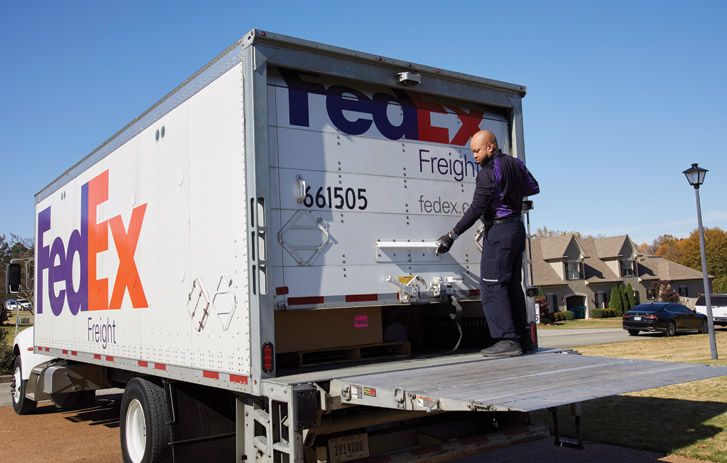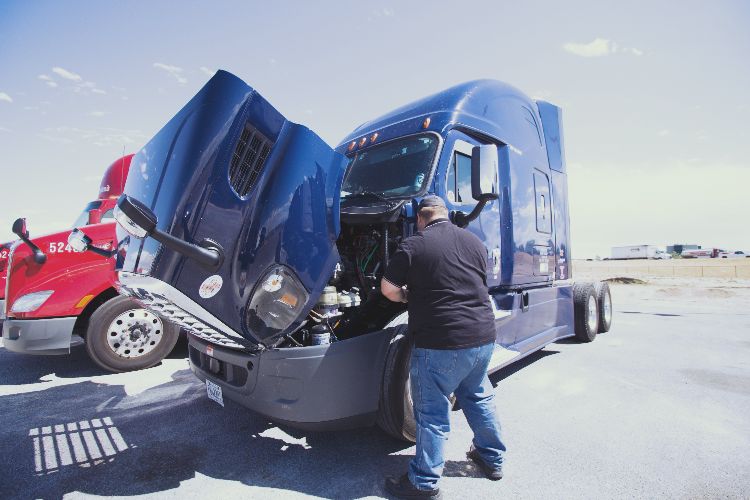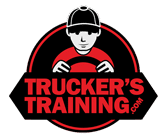Decided on a career as a truck driver? Need a CDL truck driving school near you? The duration of a CDL course for training might vary greatly depending on the institution or college you choose to attend. When it comes to careers, many individuals choose truck driving as a first career, or as a pivot to a second career because of greater security, freedom of being on the road, options of working for a trucking company or as an owner operator, and the potential of lucrative job opportunities.
To work for a trucking firm as a truck driver, you must first get a commercial driver’s license (CDL). Is it feasible to become a truck driver with a CDL? Absolutely. You can increase your chances of being employed as a professional truck driver at a reputable trucking employer with the right trucker training program.

CDL Truck Driving School
CDL schools may be accredited, certified, or licensed, and to be licensed, a course must meet all of the state’s curriculum, facility, and training standards. State-licensed and third-party-inspected courses that are guaranteed to be of the highest quality are known as certified courses. Courses that have been approved by the US Department of Education are known as accredited training programs in the United States.
Potential truck driver students who apply for a Class A / B CDL for the first time who are issued a commercial learner’s permit (CLP) on or after February 7, 2022 are required to complete the entry-level driver training (ELDT) with a registered school or program before testing. Note, as mentioned above, some states may have additional prerequisites above and beyond the federal driver training requirements.
The ELDT applies to entry-level drivers to help ensure that all new drivers acquire the minimum skills and safety standards across all states. Any first-time license or endorsement fall under ELDT. These include:
- First time Class A or Class B CDL
- Upgrade from existing Class B to Class A CDL
- First time endorsement such as passenger (P), hazardous materials (H), or school bus (S)
FMCS Training Provider Registry
Find the Right CDL Truck Driving School
1. How Much is CDL School?
Equipment, gasoline, supplies, and the time of your teacher may all add up to hefty truck driving school fees. However, pricing is not the only factor to take into account while making a final decision. Free training programs are nearly usually scams, so be aware of them. Choosing a truck driving school based only on its cost might be risky.
There is a wide range of educational options available. The cost of CDL training can vary from state to state. For example, in Arizona the truck driver program has a median cost of around $1,000, whereas in Florida, the average is $5,000. Determine the value of each program.
If the tuition at your preferred school is beyond your means, you may want to inquire about financial aid and other options for students.
Most trucking companies offer $6,000 – $7,000 (approx.) in tuition reimbursement, therefore, CDL students may not need to pay upfront costs. One caveat, look into what the employer’s reimbursement conditions are.

2. Location of CDL School
People who want to learn to drive don’t want to travel an additional thirty minutes to their CDL truck driving school location. When a training facility is accessible, it doesn’t always guarantee that the program is excellent. When looking for a school to attend, don’t scrimp on the choices you have. A few years down the line, you might be missing out on some fantastic courses.
You should proceed with caution, though, and ensure that you are familiar with the CDL transfer regulations in your state. For example to get a Wisconsin CDL, applicants must first pass a state-administered exam. Before enrolling in a program out of state, be certain that you have the option of transferring your CDL back to your home state.

3. Getting Employment through CDL Driving School
If you want the CDL truck driving school to assist you to get placed with an employer, the school has to have a great job placement program.
Think about whether or not the program offers one-on-one coaching or whether they collaborate with local transportation firms to help students gain employment. CDL truck driving schools with high driving and safety standards that they teach students, even above and beyond state and federal requirements, often attract trucking firms that hire graduates right out of the gate.
Don’t be shy to inquire about the school’s success rate in setting up their recent CDL graduates for success. Some CDL firms guarantee every graduate a job. For example, this Tennessee trucking school offers 100% job placement program. This one in Atlanta also offers job placements for their students.
It’s also worth investigating the trucking companies that hire from the school – are they reputable, how much is the starting salary of new truckers, how much do experienced truckers make, are there opportunities for growth, are employees happy, are they local or national, etc.
Do your research and be wary of any promises that are too good to be true.

4. CDL Training that Covers Everything
If you’re a new driver the training program needs to meet the ELDT federal truck driving requirements.
The ELDT training requirements include classroom (theory) and practical skills training. The CDL school will teach about 30 subjects in the classroom setting, and the students must get at least 80% on the written theory assessment to meet minimum program requirements. In order to qualify for the CDL exam, trucker students will receive specific behind-the-wheel training and a trainer’s endorsement stating that they are proficient in the CDL skills curriculum.
If you’re looking into a program, be sure it’s complete and comprehensive that includes both classroom and range training. Ample practical training, rather than merely sitting in a classroom learning theory, helps us to accelerate and experience theoretical knowledge more effectively. A person can’t learn about anything until they put their knowledge into practice.

An example of a CDL truck driving school program curriculum:
- Hands-on behind-the-wheel training of driving a truck at both practice facilities and real-world conditions
- Learn how to do a proper pre-trip inspection
- Know how to read maps, planning trips, and ensuring you’re complying with Department of Transportation (DOT) laws
- Learn how to prevent maintenance issues on tractor trailer units
- Learn to back up, turn, hooking and unhooking an industry-standard 53 foot tractor trailer
How Long is CDL School?
The length of CDL training is typically between 3 to 4 weeks, or 165 hours to 220 hours of classroom and practical training. Here’s an example of what training curriculum looks like:
- 1st week: classroom or theory
- Map reading, trip reports, prep for CDL permit, weight & cargo distribution theory, driver’s accident reporting, DOT regulations, etc.
- 2nd week: field training at school’s facility
- Couple/uncouple trailer, pre-trip inspection, skills course, etc.
- 3rd week: road training
- Highway and city driving, defensive driving, safety procedures, managing hazardous materials, etc.
- 4th week: job placement
- Employer presentations
5. Experienced CDL School Trainers
When looking into which school is right for you, ask about their trainers because the quality of a CDL school’s instructors will be key in how successful you’ll be on the road as a trucker.
Great trainers are experienced truck drivers, and typically they’ve been in the industry for a number of years. They may have held different positions in the company or trucking industry, so you’ll have access to their breadth of knowledge and experience.
Sometimes the trainer passes valuable information to you as a student that isn’t part of the curriculum. It’s in sharing their stories of being on the road, or finding the best truck stops, or efficient routes or how to stay up beat when driving alone for long stretches.

Conclusion
Do your research on which CDL schools are right for you. First, decide on what type of CDL license you need or the type of commercial vehicle you want to drive, and then consider the training standards, location, costs, quality of trainers and job placement program. Be wary of what seems to be too good to be true.

Marina was in corporate communications for over 15 years before becoming a freelance writer for TruckersTraining.com. She's been writing about transportation, and the supply chain and trucking industry for over five years. Her father was in the trucking and logging business which exposed her to the industry. Her passions include travel, nature and entrepreneurship.
